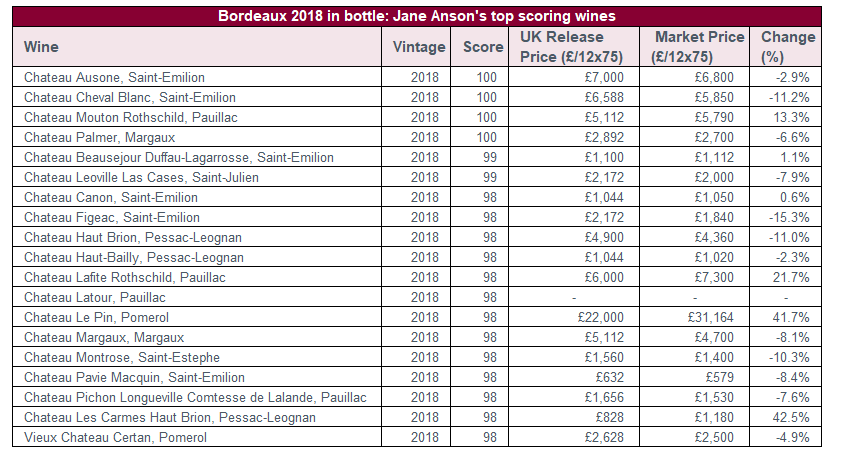Critical opinion on the latest physical Bordeaux vintage has started to emerge, with the publication of in-bottle scores from Jane Anson (Decanter) and James Molesworth (Wine Spectator).
Other major critics are expected to release their full vintage reports in March as ongoing lockdowns have delayed the usual in-bottle tastings.
As more critics release their assessments, the positioning of the 2018s will no doubt become clearer. From a secondary market perspective, the vintage is still in its infancy – though it has seen signs of movement. So far this year, 2018 has been the sixth most traded Bordeaux vintage by value, accounting for 6.8% of the region’s market share.
When it comes to quality, Anson notes that the 2018 has turned out to be a “highly successful vintage with notable highpoints particularly from Pauillac, Margaux and St-Emilion”. Due to “hesitations over certain wines”, however, Anson revised her overall rating for the vintage “to 4, not 4.5, out of 5 for the reds (although the rating remains unchanged at 4.5 for the Right Bank in the regional breakdowns)”. Her top-scoring wines can be seen in the table below, including four 100-pointers.
 James Molesworth, whose full report will be released in the March 31, 2021 issue of Wine Spectator magazine, has given his highest score to Latour (99 points), with seven wines receiving 98 points.
James Molesworth, whose full report will be released in the March 31, 2021 issue of Wine Spectator magazine, has given his highest score to Latour (99 points), with seven wines receiving 98 points.

Still, many of the critics’ favourites have lagged in terms of price performance since release. The 2018 vintage was released at the same level as the much-admired (and highly traded) 2016 vintage, with a number of wines offered at record or near-record breaking prices.
Its subsequent performance has not been helped by the appeal of the 2019 vintage either, where attractive pricing (19% lower than the 2018s on average) and broad acclaim turned a postponed En Primeur campaign into a success. See our extended report, Bordeaux 2019 – The magic is back.
According to Anson, “the market expects the 2018s to hold their value, but there is no expectation that they are going to fire up anytime soon.”
At the time of the 2018s’ release, the generous critical appraisal and relatively tight allocations (that were 20% smaller than 2017 levels on average) helped a somewhat stop-start campaign, despite some concerns around pricing. Will the forthcoming in-bottle critical reviews bring Bordeaux 2018 back into the spotlight, influencing demand and prices?






